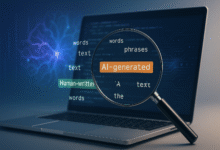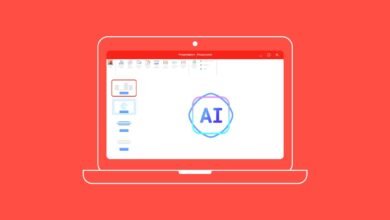Is AI Bad for the Environment?
It’s an exciting technology that makes our lives easier in many ways. But there’s a side of AI that many people don’t talk about: its impact on the environment.

Artificial Intelligence (AI) is everywhere today, helping with tasks from shopping recommendations to voice assistants like Siri or Alexa. It’s an exciting technology that makes our lives easier in many ways. But there’s a side of AI that many people don’t talk about: its impact on the environment. You may wonder, Is AI Bad for the Environment? In this post, we’ll explore how AI affects the environment and what can be done to reduce its impact.
The Energy Problem Behind AI
Most of us think of AI as something digital, like software or robots. But we don’t often consider the physical resources needed to run these systems. AI, especially powerful systems that process lots of data, requires a huge amount of energy to work. The more data an AI needs to process, the more power it uses.
For example, training an AI model can consume as much energy as five cars do over their entire lifetime, including the fuel they use! This might sound shocking, but it’s true. Training large AI models, which tech companies like Google and Microsoft do all the time, takes a lot of electricity.
Real Example: The Carbon Footprint of AI
Let’s look at an example. In 2019, a study from the University of Massachusetts showed that training one big AI model could emit over 626,000 pounds of carbon dioxide. That’s the same as the emissions from five cars during their whole life! Imagine how many AI models are being trained worldwide every day—it’s easy to see that AI has a large carbon footprint.
Related: The Green Revolution: Tech Solutions for Environmental Challenges
Why Does AI Use So Much Energy?
AI needs so much energy because it handles huge amounts of data. To get AI to work, companies have to feed it lots of information and make it learn from that data. This process is called training the AI, and it can take days or even weeks of continuous work by very powerful computers.
After the AI is trained, it still needs to keep working in real-time to answer questions, recognise voices, or control things like self-driving cars. All of this work takes place in massive data centres, which are buildings full of computers that store and process all the data AI needs. These data centres run 24/7 and require constant cooling to stop the machines from overheating, which uses even more energy.
Data Centres: The Backbone of AI
Data centres are the main powerhouses for AI. They store the information and run the processes needed for AI to function. But these centres use a tonne of electricity. According to the International Energy Agency (IEA), data centres already use about 1% of all global electricity. As AI becomes more popular, this number will only go up.
One well-known example is Google’s AI called DeepMind. It’s used for everything from medical research to solving complex problems. But running systems like DeepMind requires massive data centres, which use lots of power and resources.
The Water Problem
It’s not just electricity that’s a problem. Data centres also use a lot of water. Many of them have cooling systems that rely on water to keep the servers from overheating. For example, Google’s data centre in South Carolina uses over 1.7 million gallons of water every day! That’s the same amount of water a small town might use in a day. As more AI systems are developed, the need for water to cool these data centres will increase.
How Can We Make AI More Environmentally Friendly?
While AI has a big environmental impact, we don’t need to get rid of it. Instead, we can take steps to make it more sustainable. Here are some ideas:
- More Efficient Algorithms: One way to reduce the energy AI needs is by making the algorithms it runs on more efficient. This means that AI systems would use less computing power to do the same tasks, saving energy.
- Use Renewable Energy: Another solution is to power data centres with renewable energy like solar or wind. Some companies are already doing this. For instance, Google and Microsoft have made promises to use 100% renewable energy in their data centres.
- Smarter Cooling Systems: Companies can also make data centres more efficient by improving how they cool their servers. Google, for example, uses AI to manage its cooling systems more effectively, cutting down on energy usage by about 30%.
- Government Regulations: Governments can help too by creating rules that limit the amount of energy data centres can use or by giving rewards to companies that use renewable energy. This could push more companies to adopt green energy solutions.
My Personal Experience with AI
Like many people, I use AI in my everyday life. From smart assistants like Siri to AI-powered writing tools, these technologies help me get things done faster. But learning about the energy cost of AI has made me think twice. Every time I ask my phone a question or use an AI tool, I realise there’s a hidden cost to the planet.
This doesn’t mean we should stop using AI, but it’s important to think about how we use it and what we can do to lower its environmental footprint. Now, I try to be more mindful about how much I rely on AI and explore low-energy options when I can.
Conclusion: Finding a Balance
AI is an amazing tool that makes our lives easier and helps solve big problems. But it also comes with an environmental cost, mainly through the large amounts of energy it uses. As AI continues to grow, we need to find ways to balance its benefits with its impact on the planet.
By making AI systems more efficient, using renewable energy, and improving the ways data centres run, we can enjoy the perks of AI without causing too much harm to the environment. So, the next time you use AI—whether it’s asking your phone for directions or getting a personalised recommendation—take a moment to think about the energy behind it. Together, we can make AI a force for good, not just for humans but for the Earth too.







